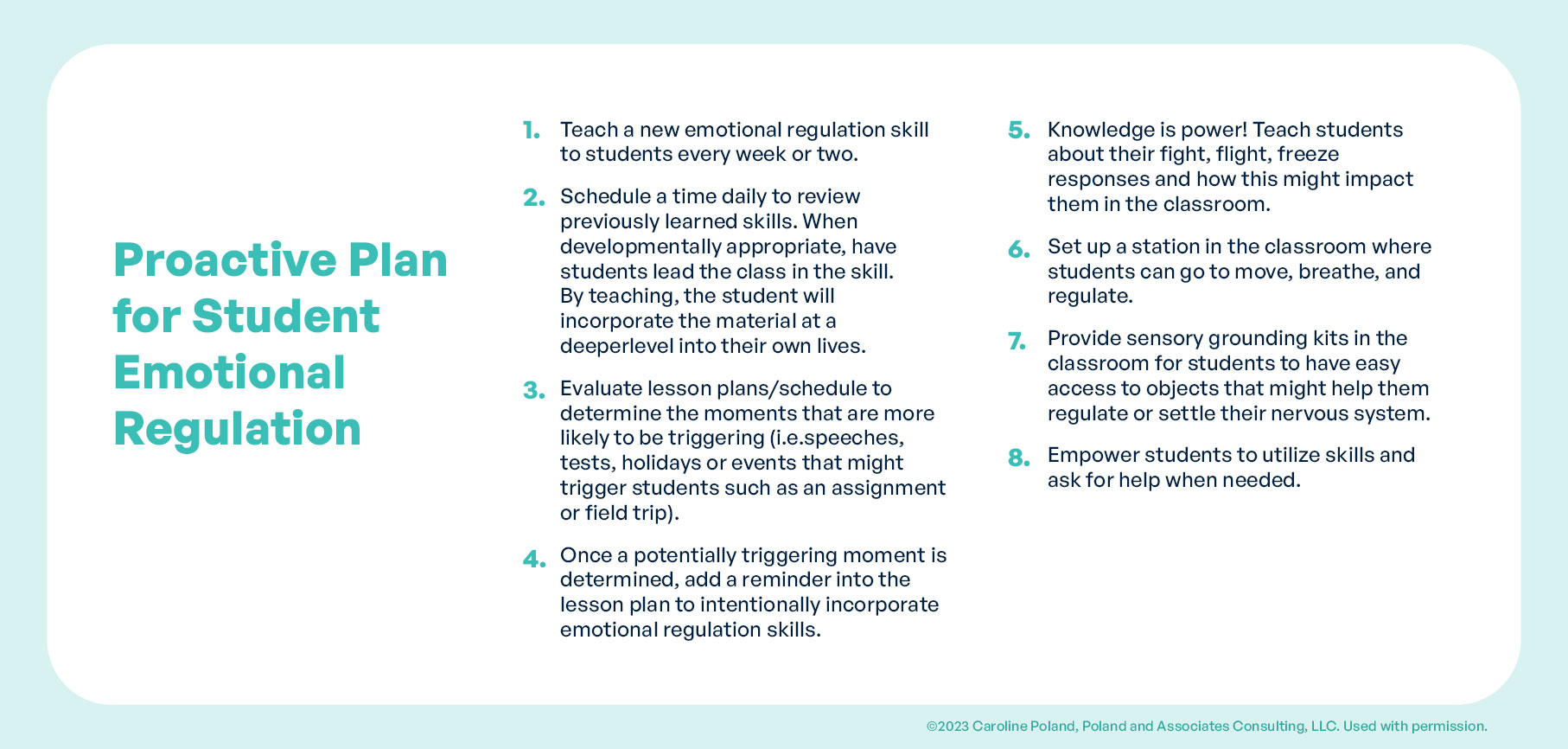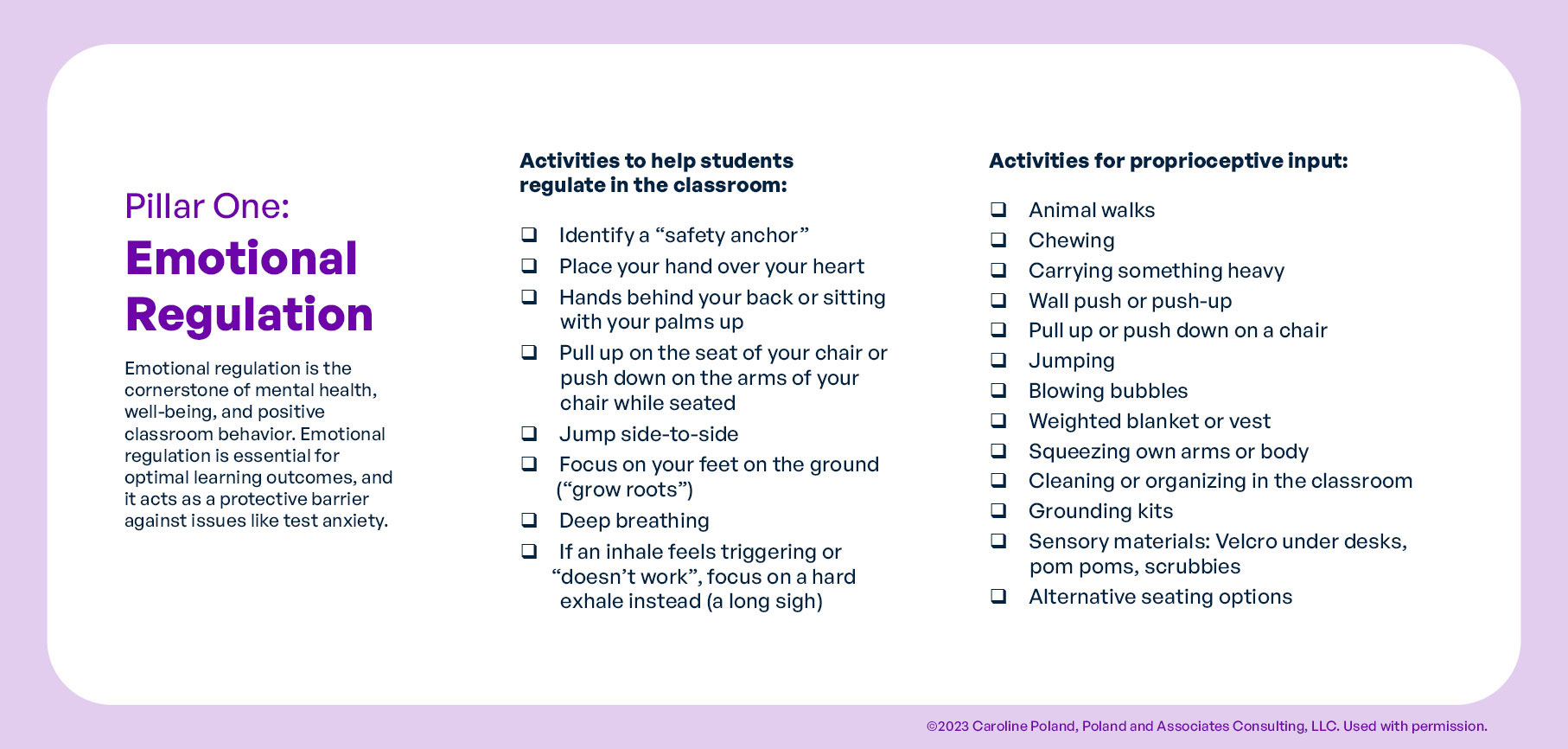
Resource Guide
Support Mental Health and Well-being: A Guide for School Leaders
Build a firm foundation of mental health and well-being in the classroom and make an Emotional Regulation Plan with guidance from Caroline Poland, Founder and CEO of Poland and Associates Consulting, MA, LMHC, LCAC, CCTP, CCFP, NCC, Licensed Mental Health Counselor, Certified Clinical Trauma Professional.
Download Full Guide for FreeA Message from the Author
We find ourselves in a mental health crisis with students. Though COVID-19 has undoubtedly highlighted this crisis—and in some ways has heightened it—this crisis existed before the pandemic. A recent publication of the CDC’s Youth Risk Behavior Survey found that in 2021, 42% of high school students “experienced persistent feelings of sadness or hopelessness” (in 2019, this number was 37%), and 29% experienced “poor mental health.” A 2022 CDC Report looked at data from 2013-2019, finding that “the most prevalent disorders diagnosed among US children and adolescents aged 3-17 years were attention-deficit/hyperactivity disorder and anxiety, each affecting approximately one in 11 (9.4%-9.8%).” All of these impact students and educators and influence their ability to learn and work.
As schools increasingly ask more of teachers (who simultaneously must attend to students’ psychological and educational needs), it’s urgent to effectively equip educators with the tools and resources needed to manage these ever-growing issues and concerns. Ultimately, administrators support their students as they proactively and reactively create supportive and healthy work environments for educators.
This guide will offer options for administrators and educators as they build a firm foundation of mental health and well-being in the classroom by focusing on both educators and students.
Caroline Poland, Founder and CEO, Poland and Associates Consulting, MA, LMHC, LCAC, CCTP, CCFP, NCC, Licensed Mental Health Counselor, Certified Clinical Trauma Professional

The Trauma-Informed Classroom
Incorporating trauma-informed approaches into the classroom is critical given that the incidence of trauma and mental health in children (and thus within classroom settings) is significant. The National Child Traumatic Stress Initiative reports “…More than two-thirds of children reported at least 1 traumatic event by age 16.” It’s important to acknowledge that the COVID-19 pandemic was a psychological trauma with cascading impacts across a child’s life. Additionally, children experience a wide range of other traumas; sadly, many children experience more than one trauma during their childhood.

The Three Pillars of a Trauma-Informed Classroom
A trauma-informed classroom promotes emotional well-being, safety, and a sense of belonging—which contributes to a positive school environment and teacher retention. There are three essential pillars of a trauma-informed classroom: emotional regulation, safety, and connection. These pillars are crucial in creating an environment where students can thrive, feel secure, and engage in effective learning.

Creating an Emotional Regulation Plan
Incorporating emotional regulation into the classroom proactively is incredibly helpful to students’ overall well-being by improving their ability to learn and stay focused. Be prepared and have a plan.
A proactive plan for emotional regulation in the classroom helps improve success for classroom outcomes. Implement a reactive plan when students need it, too—just as lesson plans are essential to guide the day, an emotional plan is also crucial. Figuring out the rhythm of incorporating these emotional regulation skills into the day is vital for supporting overall health and well-being, as well as helping to support a felt sense of safety in the classroom. In this section, you’ll find the elements of a proactive plan and fillable worksheets for student and educator plans.

Success Story
See Success StoriesSTARS Charter School
STARS partnered for money to run their school. They were able to embark upon building projects with minimal disruptions to their thriving programs. With the new, improved space, STARS has been able to dramatically increase enrollment.
View Case Study
Need money to run your school?
Get Started- Talk to a real person
- Get qualified in minutes
- Fund your school